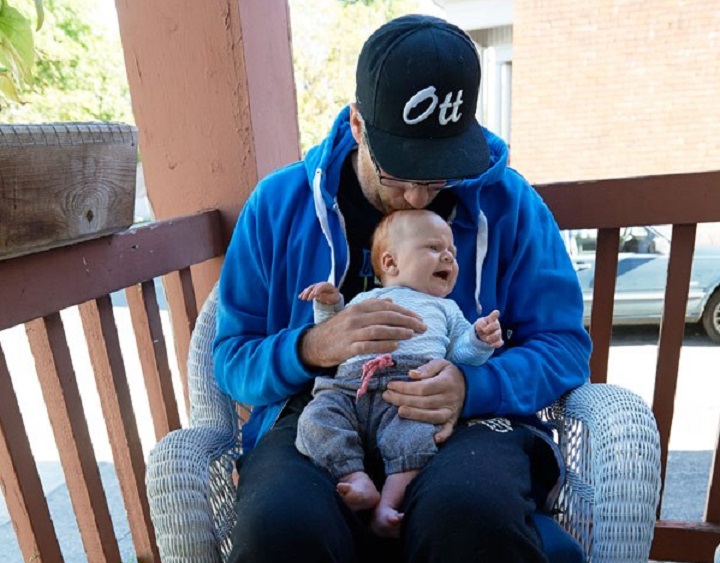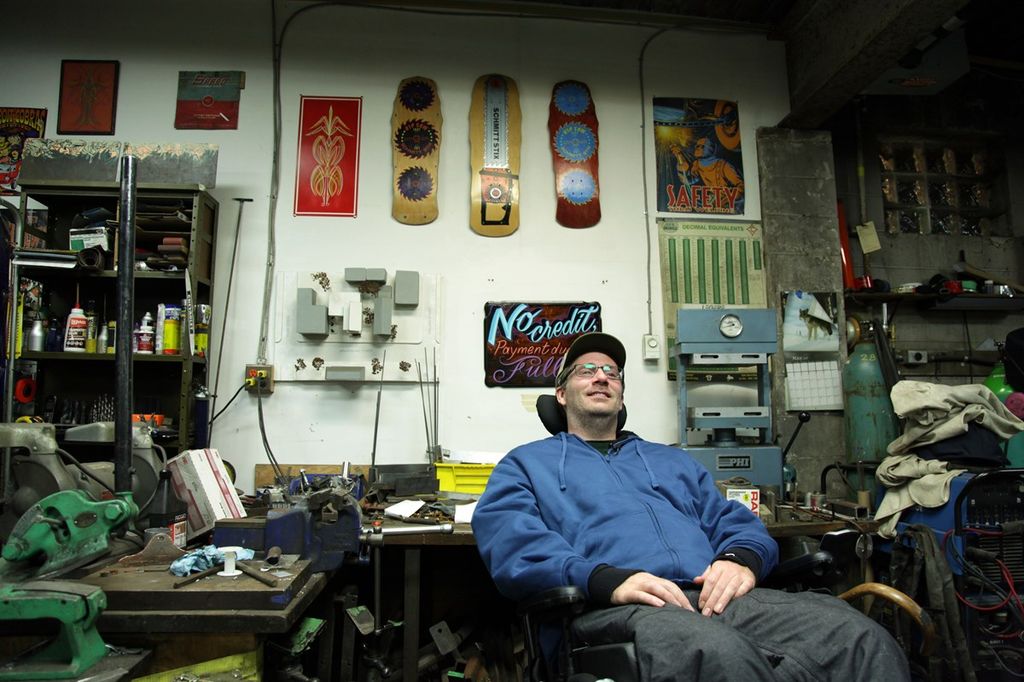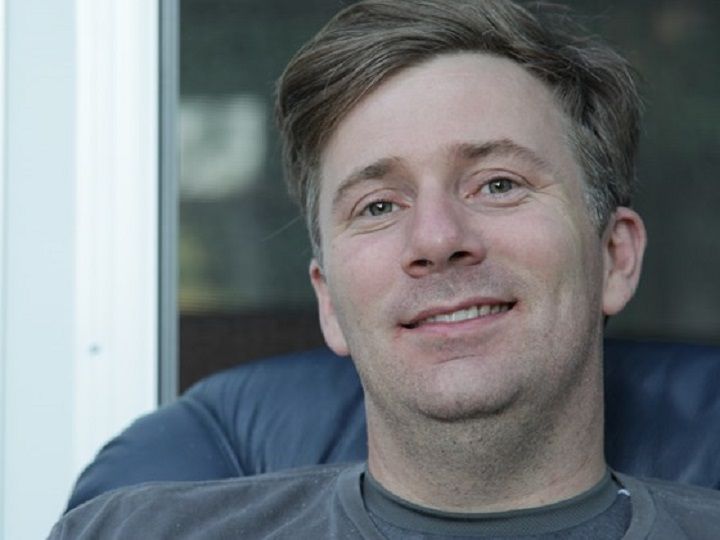
Amyotrophic lateral sclerosis (ALS), sometimes called Lou Gehrig's disease, is a rapidly progressive and fatal neurological disease for which there is no cure. This disease is characterized by nerve cells (neurons) dying in the brain, causing those who suffer from it to gradually lose control of their muscles and have to deal with increasing levels of immobility. In most cases, the disease affects people who are 60–69 years of age, but cases have been known to occur in younger people as well.
One such person is Alan Gustafon, a 38-year old man from Ottawa, Ontario, who runs his own metal fabrication business. In July 2nd, 2015, after many months of noticing weakness in his right hand and arm, Alan sought medical help. He was diagnosed with ALS. He and his family were devestated by the news, as it meant that he could no longer work, and their future together was entirely uncertain.
Alan is hardly alone. According to data from the National ALS Registry, ALS is one of the most common neuromuscular diseases worldwide, with a reported 3.9 cases per 100,000 people in the U.S. general population. What's worse, in 90 to 95 percent of all ALS cases, the disease occurs apparently at random with no clearly associated risk factors. In essence, the causes are unknown, and there appears to be no indication of family history that would allow for screening.
However, even in the face of this diagnosis, Alan and his wife Jessica found reasons for remaining hopeful. On August 7th, roughly one month after Alan was diagnosed, his son, Harvey Alan Gustafson, was born. But with his wife Jess busy looking after their newborn son, and Alan no longer able to work, the family began to face a serious financial crisis. Luckily, Alan and his family were blessed again, this time with the love and support of their friends, family, and community.

Alan and his son, Harvey Alan Gustafson, who was born a month after Alan was diagnosed with ALS. Credit: Ellen Bond/kitchissippitimes.wordpress.com.
On September 11th, Alan's best friend, Peter Joynt - who had known Alan since elementary school and was the best man at his wedding - decided that something had to be done. Having heard of crowdfunding, he chose to share the Gustafson family's story with the world:
"I decided to launch a crowdfunding campaign because I knew Al and Jess needed help," said Peter. "Al had to close his business and they just had a baby. I knew I couldn't do it on my own, so I wanted to reach out to a broader group of friends. I had heard about crowdfunding and Kickstarter campaigns. It just seemed like a logical step in this case. I also knew many people would want to help Al, and this seemed like a logical place to start."
The campaign was an immediate success. Within 48 hours, friends, family, and people from all over the world came together to raise over $20,000. The campaign also had 339 shares via social media and the video produced by Joynt for the campaign - entitled "Let's Fill Al's Bucket" - was viewed over 1400 times. From there, things only got more impressive. Within two and a half days of the campaign's launch, "Al's Bucket" received over $40,000 in donations, surpassing their original target of $25,000.
Faced with this enduring tide of support, the campaign was extended for a second round, with a new target of $50,000 set. Since that time, the campaign has been extended three more times - to $75,000, $100,000, and most recently to $150,000. Naturally, Joynt was overwhelmed by the success of it all:
"I did not expect the kind of success we had. Not at all," he said. "I thought we might reach $20k in a few months, with other fundraising activities. I did not expect to raise that amount in 2 days. Almost every time I checked the total in the first week, I was moved to tears. I couldn't believe what we were doing - doing for Al and Jess (a family that really needed this), but also what we were doing collectively as a group. We rallied together to do something so extraordinary. I still cannot believe we have already raised over a hundred thousand dollars in just two months. It's beyond words really."
As of the penning of this article, the campaign has successfully raised $105,400, with another 391 days left to go. A total of 574 supporters have made donations, the campaign has been shared over 1,200 times via social media, and the campaign video ("Let's Fill Al's Bucket") has been viewed over 1,800 times.

Alan photographed in his metal fabrication business, which he has been forced to shut down since his diagnosis. Credit: youcaring.com
Naturally, the Gustafon family have been astounded by the level of support they have recieved as well. As Alan explained to HeroX via an emailed recording:
“The fundraising has let me know that I am not alone. A terminal illness is awfully isolating and I was feeling alone for quite some time when this came about. And then of course the monetary value has been amazing. Paying my bills, and knowing that I am actually going to be able to live in my home for quite a while is a major stress relief, because I am very comfortable here and this is where I wanted my family to grow and flourish. And least that will not be a risk for a little while at least.”
At the same time, the success of this campaign has served to highlight the effectiveness and power that crowdfunding and free online fundraising services can have. In the past few months, friends and supporters of the Gustafon's have also raised money by more traditional means - i.e. a concert, bake sales, etc.
However, by launching a fundraising effort that was able to take advantage of social media and video sharing, the campaign was able to reach a much larger audience. Thanks to this, hundreds of friends and potential supporters who might not have otherwise heard, or who are separated by vast distances and couldn't attend a specific event, were able to contribute money and voice their support via electronic means.
And the case of Alan Gustafson is just one of many. Every day, people all over the world look to crowdfunding as a means of raising money to help them pay for medical bills, unforeseen expenses, and financial burdens they simply cannot meet. In the past, such people would have been reliant on their immediate friends and family, their local community, or charitable organizations to do this. But today, they have the ability to reach out to the global community and to draw support and help from caring people without boundaries.
Do you have a cause or a you are passionate about? Then head on over to the Launch A Campaign page and be prepared to make a difference!
Top Image Credit: youcaring.com








